You need your family now more than ever
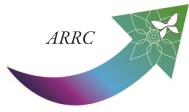

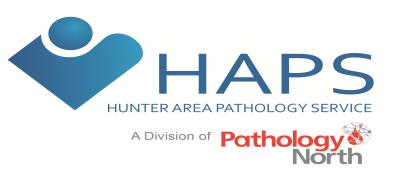
Level 2 HAPS Building John Hunter Hospital
+61 2 4921 4095
[email protected]
Myasthenia Gravis
Background: Myasthenia gravis (MG) is an acquired autoimmune disorder characterised clinically by
weakness of skeletal muscles and fatigability on exertion. The first reported clinical description was in 1672.
Pathophysiology: The antibodies in MG are directed toward the acetylcholine receptor (AChR) at the
neuromuscular junction (NMJ) of skeletal muscles.
The hallmark of MG is muscle weakness that increases during periods of activity and improves after periods
of rest. Certain muscles, such as those that control eye and eyelid movement, facial expression, chewing,
talking, and swallowing are often, involved in the disorder. The muscles that control breathing and neck and
limb movements may also be affected.
What causes myasthenia gravis? MG is caused by a defect in the transmission of nerve impulses to muscles.
It occurs when normal communication between the nerve and muscle is interrupted at the neuromuscular
junction - the place where nerve cells connect with the muscles they control. Normally when impulses travel
down the nerve, the nerve endings release a neurotransmitter substance called acetylcholine. Acetylcholine
travels through the neuromuscular junction and binds to acetylcholine receptors which are activated and
generate a muscle contraction.
In MG, antibodies block, alter, or destroy the receptors for acetylcholine at the neuromuscular junction which
prevents the muscle contraction from occurring. These antibodies are produced by the body's own immune
system. Thus, MG is an autoimmune disease because the immune system - which normally protects the body
from foreign organisms - mistakenly attacks itself.
Frequency: In the United States MG is uncommon. Estimated annual incidence is 2 per 1,000,000.
Mortality/Morbidity: Recent advances in treatment and care of critically ill patients have resulted in marked
decrease in the mortality rate. The rate is now 3-4%, with principal risk factors being age older than 40 years,
short history of severe disease, and thymoma. Previously, the mortality rate was as high as 30-40%.
Sex: The female-to-male ratio is said classically to be 6:4, but as the population has aged, the incidence is now
equal in males and females.
Age: MG presents at any age. Female incidence peaks around 30 years of age, whereas male incidence peaks
at age 60-70. Average age of onset is 28 years in females and 42 years in males.
Transient neonatal MG occurs in infants of myasthenic mothers.
History: MG is characterized by fluctuating weakness increased by exertion. Weakness increases during the
day and improves with rest. Presentation and progression vary.
Page 1 of 5
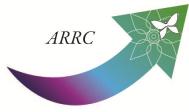
Extraocular muscle (EOM) weakness or ptosis is present initially in 50% of patients and occurs during the
course of illness in 90%. Bulbar muscle weakness is also common, along with weakness of head extension and flexion.
Patients progress from mild to more severe disease over weeks to months. Weakness tends to spread from
the ocular to facial to bulbar muscles and then to truncal and limb muscles.
Alternatively, symptoms may remain limited to the EOM and eyelid muscles for years.
Intercurrent illness or medication can exacerbate weakness, quickly precipitating a myasthenic crisis and
rapid respiratory compromise.
Spontaneous remissions are rare. Long and complete remissions are even less common. Most remissions
with treatment occur during the first 3 years of disease.
Physical findings: Variability in weakness can be significant and clearly demonstrable findings may be
absent during examination. This may result in misdiagnosis (eg, functional disorder). The physician must
determine strength carefully in various muscles and muscle groups to document severity and extent of the
disease and to monitor the benefit of treatment.
Another important aspect of the physical examination is to recognise when respiratory failure is imminent.
Difficulty breathing necessitates urgent evaluation and treatment.
Weakness can be present in a variety of different muscles and is usually proximal and symmetric.
Sensory examination and deep tendon reflexes are normal.
Facial muscle weakness
Weakness of the facial muscles is almost always present.
Bilateral facial muscle weakness produces a masklike face with ptosis (eye protrusion) and a horizontal smile.
The eyebrows are furrowed to compensate for ptosis.
Bulbar muscle weakness
Weakness of palatal muscles can result in a nasal twang to the voice and nasal regurgitation of food and especially liquids.
Chewing may become difficult.
Severe jaw weakness may cause the jaw to hang open (the patient may sit with a hand on the chin for support).
Swallowing may become difficult and aspiration may occur with fluids, giving rise to coughing or choking while drinking.
Weakness of neck muscles is common and neck flexors usually are affected more severely than neck extensors.
Limb muscle weakness
Certain limb muscles are involved more commonly than others (eg, upper limb muscles are more likely to be involved than lower limb muscles).
In the upper limbs, deltoids and extensors of the wrist and fingers are affected most. Triceps are more likely to be affected than biceps. In the lower extremities, commonly involved muscles include hip flexors, quadriceps, and hamstrings, with involvement of foot dorsiflexors or plantar flexors less common.
Respiratory muscle weakness
Such weakness may produce acute respiratory failure. This is a true neuromuscular emergency, and immediate intubation may be necessary. Weakness of the intercostal muscles and the diaphragm may result in carbon dioxide retention due to hypoventilation.
Weak pharyngeal muscles may collapse the upper airway. Careful monitoring of respiratory status is necessary in the acute phase of MG.
Page 2 of 5
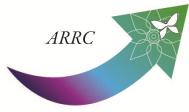
Ocular muscle weakness
Typically, EOM weakness is asymmetric. The weakness usually affects more than 1 EOM and is not limited to muscles innervated by a single cranial nerve. This is an important diagnostic clue.
Eyelid weakness results in ptosis. Patients may furrow their foreheads, utilizing the frontalis muscle to
compensate for this weakness. A sustained upgaze exacerbates the ptosis while closing the eyes for a short period improves it.
Evidence of other coexisting autoimmune diseases
MG is an autoimmune disorder, and other autoimmune diseases occur more frequently in patients with MG than in the general population.
Some autoimmune diseases that occur at higher frequency in patients with MG are hyperthyroidism, rheumatoid arthritis, scleroderma, and lupus.
A thorough skin and joint examination may help diagnose any of these coexisting diseases.
MG is idiopathic (no known cause) in most patients.
Penicillamine is known to induce various autoimmune disorders, including MG.
AChR antibodies are present in about 90% of patients developing MG secondary to penicillamine
Even in patients who do not develop clinical myasthenia, antibodies can be demonstrated in some cases.
Various drugs can exacerbate symptoms of MG.
Antibiotics (eg, aminoglycosides, ciprofloxacin, erythromycin, ampicillin)
Beta-adrenergic receptor blocking agents (eg, propranolol, oxprenolol)
Timolol (ie, a topical beta-blocking agent used for glaucoma)
Anticholinergics (eg, trihexyphenidyl)
Neuromuscular blocking agents, including vecuronium and curare, should be used cautiously in
myasthenics to avoid prolonged neuromuscular blockade.
Lab Studies:
Anti-acetylcholine receptor antibody.
This test is reliable for diagnosing autoimmune MG. The result of the test for the anti-AChR antibody (Ab) is positive in 74% of patients.
Antistriated muscle (anti-SM) Ab is another important test in patients with MG.
It is present in about 84% of patients with thymoma who are younger than 40 years and less often in patients without thymoma, thus its presence should prompt a search for thymoma in patients younger than 40 years.
In individuals older than 40 years, anti-SM Ab can be present without thymoma.
Thyroid function tests should be done to evaluate for coexistent thyroid disease.
Imaging Studies:
Plain anteroposterior and lateral views may identify a thymoma as an anterior mediastinal mass.
Page 3 of 5
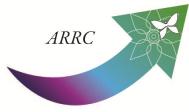
A negative chest x-ray does not rule out a smaller thymoma, in which case a chest CT scan is required.
Chest CT scan is mandatory to identify thymoma in all cases of MG.
Medical Care:
Even though no rigorously tested treatment trials have been reported and no clear consensus exists on
treatment strategies, MG is one of the most treatable neurologic disorders. Several factors (eg, severity, distribution, and rapidity of disease progression) should be considered before initiating or changing therapy.
AChE inhibitors and immunomodulating therapies are the mainstays of treatment. In the mild form of the
disease, AChE inhibitors are used initially. Most patients with generalized MG require additional immunomodulating therapy.
Plasmapheresis and thymectomy are important modalities for treating MG. They are not traditional
medical immunomodulating therapies, but they function by modifying the immune system.
Plasmapheresis or plasma exchange
Plasma exchange (PE) is an effective treatment for MG. Weakness improves within days, but the improvement lasts only 6-8 weeks.
PE usually is used as an adjunct to other immunomodulatory therapies and as a tool for crisis management.
Long-term regular PE on a weekly or monthly basis can be used if other treatments cannot control the disease.
Complications of PE are limited primarily to complications of intravenous access (eg, central line placement), but also include less commonly hypotension and coagulation disorders.
PE is thought to act by removing circulating humoral factors (ie, AChR Ab and immune complexes).
Surgical Care:
This is an important treatment option in MG, especially if a thymoma is present.
It has been proposed as a first-line therapy in most patients with generalized myasthenia.
Thymectomy may induce remission. This occurs more frequently in young patients with a short duration of disease, hyperplastic thymus, and high antibody titer.
Patients with MG may experience difficulty chewing and swallowing because of oropharyngeal weakness.
It may be difficult for the patient to chew meat or vegetables because of masticatory muscle weakness.
Thin fluids increase the risk of nasal regurgitation and/or aspiration.
Activity: Due to the fluctuating nature of weakness and exercise-induced fatigability patients should be as
active
Treatment: AChE inhibitors are considered to be the basic treatment of MG. Long-term corticosteroid
therapy and immunosuppressive drugs are also effective.
Anticholinesterase inhibitors -- These agents inhibit AChE, raising the concentration of ACh at the NMJ and
increasing the chance of activating the AChR. Any medication that increases the activity of the AChR can
have an effect on MG.
Immunomodulatory therapy -- MG is an autoimmune disease, and immunomodulatory therapies have been
used for these disorders since introduction of steroids. The therapies used in MG include prednisone,
azathioprine, intravenous immunoglobulin therapy (IVIg), plasmapheresis, and cyclosporine.
Page 4 of 5
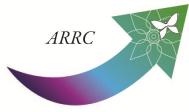
Respiratory failure may occur if respiratory muscle weakness is severe.
Dysphagia due to pharyngeal muscle weakness may occur and may lead to aspiration pneumonia.
Complications secondary to drug treatment: Long-term immunomodulating therapies may predispose
patients with MG to various complications.
Long-term steroid use may cause or aggravate osteoporosis, cataracts, hyperglycemia, weight gain, avascular necrosis of hip, hypertension, and other complications.
Long-term steroid use increases the risk of gastritis or peptic ulcer disease. Patients on such therapy also should take an H2 blocker or antacid.
Some complications are common to any immunomodulating therapy, especially if the patient is on more than 1 agent. These would include infections such as tuberculosis, systemic fungal infections, and Pneumocystis carinii pneumonia.
Risk of lymphoproliferative malignancies may be increased with chronic immunosuppression.
Prognosis:
Untreated MG carries a mortality rate of 25-31%. With current treatment (especially pertaining to acute
exacerbations), the mortality rate has declined to approximately 4%.
In patients with generalized weakness, the nadir of maximal weakness usually is reached within the first 3
years of the disease. Half of the disease-related mortality also occurs during this time period. Those who survive the first 3 years of disease usually achieve a steady state or improve. Worsening of disease is uncommon after 3 years.
Important risk factors for poor prognosis include age older than 40 years, a short history of progressive
disease, and thymoma.
Patient Education:
Educate patients to recognize impending respiratory crisis.
Intercurrent infection may worsen symptoms of MG temporarily.
Mild exacerbation of weakness is possible in hot weather.
Risk of congenital deformity (arthrogryposis multiplex) is increased in offspring of women with severe
Neonates born to women with MG need to be monitored for respiratory failure for 1-2 weeks after birth.
Certain immunosuppressant drugs have teratogenic potential.
Discuss these aspects with women in reproductive years prior to beginning therapy with these drugs.
Certain medications such as the aminoglycosides, ciprofloxacin, chloroquine, procaine, lithium,
phenytoin, beta-blockers, procainamide, and quinidine may exacerbate symptoms of MG. Many other drugs have been associated only rarely with exacerbation of MG.
Medications that induce the hepatic microsomal cytochrome P-450 system (eg, corticosteroids) may
render oral contraceptives less effective.
Page 5 of 5
Source: http://www.autoimmune.org.au/SiteFiles/autoimmunecomau/2.7.2_Myasthenia_Gravis.pdf
Spam Classification Documentation What is SPAM? "Unsolicited, unwanted email that was sent indiscriminately, directly or indirectly, by a senderhaving no current relationship with the recipient."Objective: 1. Develop an algorithm apart from Bayesian probabilities,i.e through Frequent item set Mining, Support Vector Machines (SVM).
International Journal of Behavioral Nutrition and Physical Activity ResearchWho will lose weight? A reexamination of predictors of weight loss in womenPedro J Teixeira*, António L Palmeira, Teresa L Branco, Sandra S Martins, Cláudia S Minderico, José T Barata, Analiza M Silva and Luís B Sardinha Address: Department of Exercise and Health, Faculty of Human Movement – Technical University of Lisbon, Cruz Quebrada, PORTUGAL







